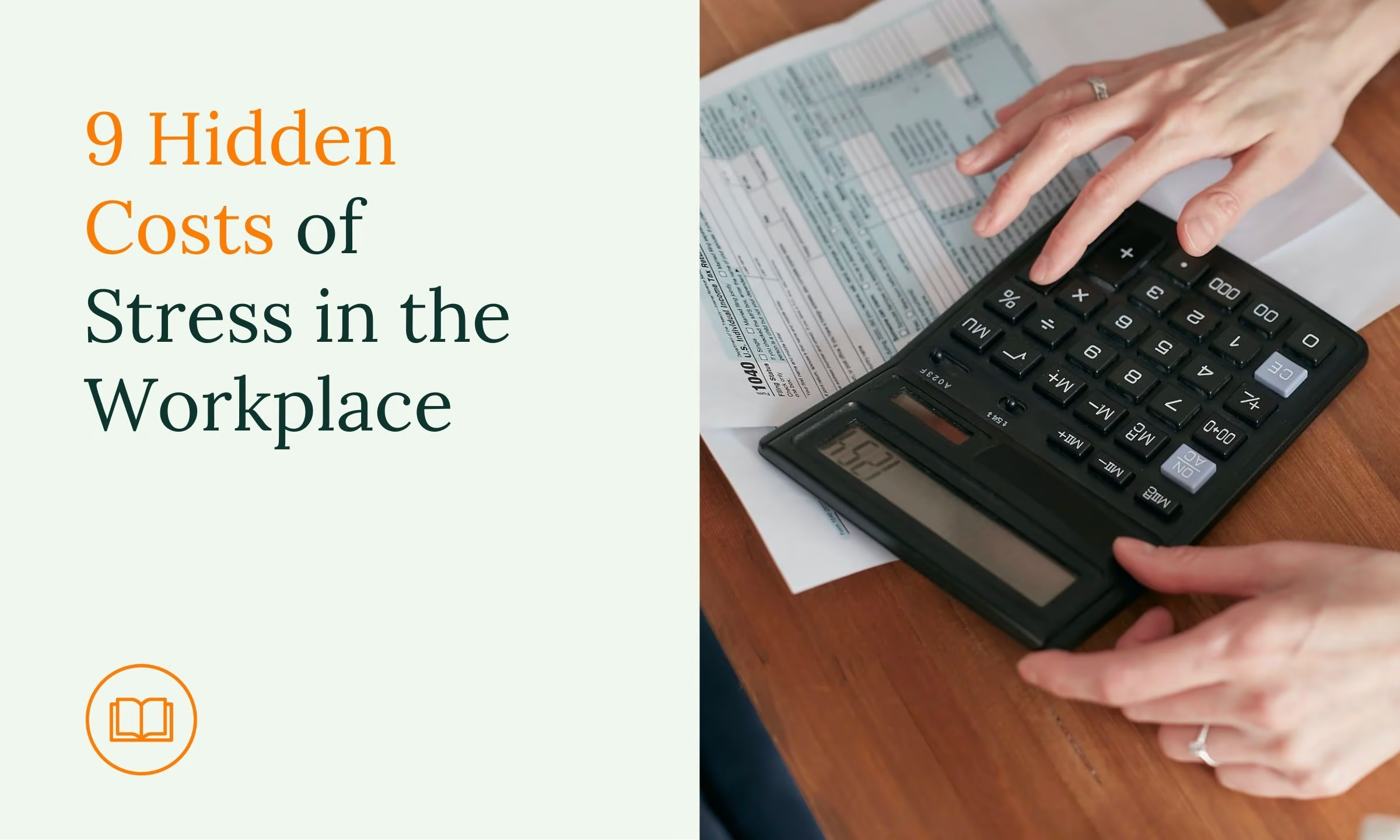Here are some expensive things: Caviar and champagne. Real estate. Your own private yacht. But a feeling – and certainly a feeling as mundane as stress – couldn’t be expensive, right? Sadly: WRONG. The costs of stress are higher than you might believe.
It’s not as glamorous as the other expensive options on our list (and certainly not as fun), but stress is one of the top costs in any company. It starts adding up so quickly that you might not even notice it, and sometimes in ways you wouldn’t think to track.
So let’s jump right in, and talk about nine hidden costs of stress in the workplace!

“I’m just a little stressed out, that’s all!” Have you ever heard something like that from an employee, and wondered whether it’s time to take action? While some stress is a normal part of any job, excessive and chronic stress can have detrimental effects on both employees and the organizations they work for – and the costs of stress are huge.
What’s more, the costs of stress might not be immediately clear to you or even your employees themselves. In this article, we’ll share nine hidden costs of workplace stress and explore how implementing strategies and tools to combat stress will create a healthier, more productive work environment.
Let’s start by taking a look at exactly what the hidden costs of stress in the workplace are.
1. Decreased Productivity
One of the most direct and immediate impacts of workplace stress is reduced productivity. Stressed employees are more likely to struggle with focus, decision-making, and time management. The constant mental burden of stress can result in mistakes, missed deadlines, and a decline in overall work output.
2. Increased Absenteeism
Chronic stress often leads to increased absenteeism as employees take time off to deal with physical or mental health issues exacerbated by stress. Frequent sick days can disrupt team dynamics, project timelines, and work continuity, affecting overall productivity.
3. Turnover and Recruitment Costs
High stress levels can contribute to employee burnout and dissatisfaction, leading to higher turnover rates. Replacing experienced employees incurs recruitment and training expenses, and constant turnover disrupts workflow, further impacting the bottom line.
4. Decreased Employee Well-Being
Stress-related health problems, such as cardiovascular issues, mental health disorders, and immune system suppression, can lead to physical health issues for employees. Chronic stress puts strain on the body and may have dangerous consequences.
Similarly, stress can have a significant impact on employees’ mental health. This has far-reaching and often underestimated effects on both individuals and the organization as a whole. While the short-term impact of workplace stress might be evident in reduced productivity or increased absenteeism, the long-term consequences of poor mental health can be more subtle yet equally damaging.
5. Diminished Employee Engagement
Stress can erode employees’ sense of purpose, connection, and engagement with their work. Disengaged employees are less likely to put in discretionary effort, contribute innovative ideas, or go the extra mile for the organization.
6. Workplace Conflicts
High stress levels can contribute to interpersonal conflicts and strained relationships among employees. Conflicts consume valuable time and energy, disrupt collaboration, and create a negative work atmosphere.
7. Impact on Company Reputation
A workplace culture characterized by high stress levels and employee dissatisfaction can tarnish a company’s reputation. Negative perceptions can deter potential job seekers and clients, affecting business growth and profitability.
8. Innovation and Creativity Decline
Stress can stifle employees’ ability to think creatively and innovatively. When stressed, individuals are more likely to resort to familiar and routine approaches, hindering the development of fresh ideas and novel solutions that drive innovation within the organization.
9. Missed Opportunities
Stressed employees may be too preoccupied with managing their stressors to notice or pursue growth opportunities within the organization. This can result in overlooked chances for career advancement and skill development, limiting both individual and company growth.
The Benefits Of Reducing Workplace Stress
Considering the many hidden costs of workplace stress, it’s crucial to implement strategies that help employees cope. By prioritizing stress reduction, organizations can enhance employee morale, engagement, and overall job satisfaction. A stress-free workplace promotes effective communication, teamwork, and creativity, which are essential for innovation and organizational growth.
Moreover, lower stress levels contribute to lower turnover rates, saving recruitment and training costs. Demonstrating a commitment to employee well-being through stress reduction initiatives not only improves individual quality of life but also bolsters the organization’s reputation as an employer of choice, attracting and retaining top talent for sustained success.
Not sure where to start? We’ve got you.






